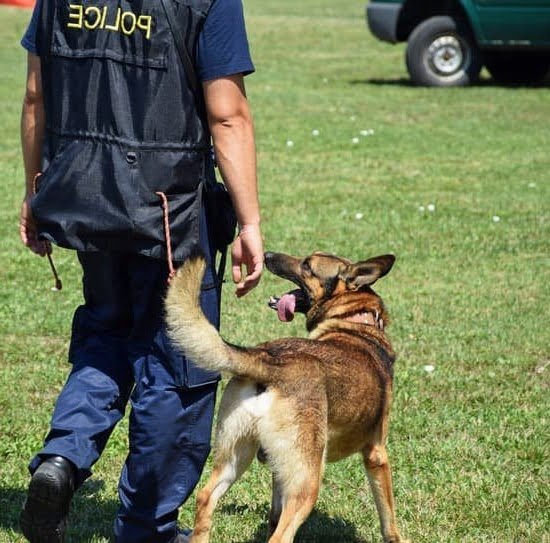Introduction
Cardiac alert dogs are specially trained service animals designed to detect minor changes in a person’s heart rate. These dogs are taught to recognize changes in their handler’s physiology and respond accordingly, such as nudging, barking, or fetching medical assistance. The purpose of this training is to provide an early warning system for people who suffer from heart related conditions so they can avoid complications such as cardiac events and sudden cardiac arrest.
In order to train a dog for this purpose, the handlers must first acclimate the animal to their particular health condition. This involves having them monitored by a cardiologist and learning how to identify specific physiological signals that the canine may need to be aware of. In addition, consistent reinforcement should be given when positive behaviors emerge from the animal in response to any of these changes in their handler’s heartbeat. This helps instill confidence in the dog that they are performing the proper task whenever it arises.
As with any specialized training program, it is important that both the trainers and handlers have experience with animal-related sciences and behavior modification techniques in order for it to work effectively. Additionally, regular evaluations should be performed on both individuals and canines alike in order assure proper progress has been made throughout all stages of the process.
Finally, when evaluating the overall effectiveness of Cardiac Alert Dog Training, one should take into account factors such as the success rate with patients who opt for it and its long-term impact on surviving cardiac events or preventing them altogether. After being evaluated over a period of time and proving itself successful at warning people about potentially life threatening conditions, this method may become more widely accepted around world as means of saving lives on daily basis.
Overview
Cardiac Alert Dog Training is a type of training that is intended to provide life-saving support to people with serious medical conditions. This type of training primarily focuses on teaching dogs to detect changes in heart rate and alert their handler (owner) appropriately. This type of training has been used to help those with cardiac problems, seizure disorders, diabetes, and other chronic illnesses.
The progress of Cardiac Alert Dog Training over the years has been remarkable. It began as a concept in the 1990s and since then has made great advancements due to innovative technology. Advances in scent detection technology have allowed dogs to detect even faint levels of hormones or other biomarkers specific to these medical conditions. As well, various new technologies such as voice recognition collars have been developed which allow the dogs to alert owners when they detect a change in their owner’s heart rate. This makes it easier for owners and can provide them with peace of mind about their own health and well-being.
Overall, Cardiac Alert Dog Training provides individuals suffering from medical conditions with a much needed security measure against sudden health risks. The constant development of technology in this field shows just how beneficial it can be for those who suffer from chronic medical conditions and its potential impact on many lives going forward.
Benefits
Practical Benefits
Cardiac Alert Dogs are specially trained to detect when their owners are experiencing cardiac disturbances. This can be lifesaving as it allows the person to take necessary steps and precautions before their condition worsens. By detecting a cardiac event in its early stages, proactive action is taken and potential harm is mitigated.
Emotional Benefits
In addition to providing practical medical benefits, these dogs also provide emotional support for their owners. The bond between owner and dog can have a major impact on an individual’s quality of life and overall wellbeing. People who own Cardiac Alert Dogs often report feeling more secure, less anxious, and happier due to the connection they share with their canine companion. Not only that, but research has shown that the presence of pets can mitigate feelings of loneliness and depression. Overall, these dogs can greatly improve their owners’ mental health by enhancing their emotions of security and contentment.
Types of Training
Classroom Training – This basic training helps teach the dog about their roles and responsibilities. Topics can include, but aren’t limited to, basic commands (e.g., sit, stay, down), leash manners, good house habits (no jumping or begging for food) and how to respond to an emergency situation.
Partner Training – Partner training consists of teaching the dog and its family to work together as a team in order to better detect heart arrhythmias that alert them to a potential medical emergency. During this type of training the dog and its family practice responding to subtle cues or behaviors that help indicate if there is an urgent medical issue such as recognizing certain smells or changes in breathing patterns.
Public Access Training – This is necessary training so that Cardiac Alert Dogs are able to accompany their owners on public outings without causing disruption or interfering with other patrons/visitors/employees. The public access portion of the training should also prepare these dogs for any situations they may encounter while in public, including noise levels and reactions from other people or animals they encounter while out on walks or errands.
Behavioral Training – Finally, behavioral training will teach the dog how to avoid distractions such as sudden noises or activity that could cause confusion. This type of training uses positive reinforcement methods like rewards for good behavior and ignoring bad behavior, thus setting boundaries for the dogs before it becomes unmanageable in a large group of people or when outside at a park or other similar areas
Special Skills
Cardiac Alert Dog Training is a specialized program designed to teach dogs to detect and alert their owners to changes in heart rate. The program uses positive reinforcement techniques in order to train dogs to recognize changes in heart rate via the exclusive use of scent. Once the dog is able to detect changes in heart rate, they will often alert their owner by barking, whining or pawing at them. This can provide the owner with an early warning sign if their heart rate has suddenly increased or decreased from normal levels. By warning their owners of any potential issues, Cardiac Alert Dogs are providing a vital service for those who have cardiac or other health related conditions. The skill that these specially trained dogs possess can give the owner peace of mind when treating any medical condition.
Challenges
Cardiac Alert Dog Training typically involves training dogs to alert to their owners or family members if the person is having an episode of cardiac distress. Unfortunately, this type of training can become quite challenging due to a few common issues.
First of all, it may take substantial effort and time in order to teach a dog how to distinguish between everyday environmental noises and the noises associated with cardiac distress. Additionally, repetition is usually key when it comes to learning processes such as this one, so dog trainers must be ready to incorporate plenty of practice into the curriculum.
Dogs may also need some extra motivation in order to stay focused during long training sessions; many trainers recommend offering small treats and rewards throughout the process. On top of that, distractions should be kept at bay during particularily important teaching moments – not only will this help maintain focus on the tasks underway, but it will also allow for more successful outcomes in general.
Finally, one must consider any potential physical implications that arise from conditioning a dog’s behavior – some breeds may experience increased stress levels or physical discomfort during long bouts of practice and positive reinforcement techniques should be used when deemed necessary for safety reasons.
Myths
Myth #1: Cardiac Alert Dogs require extensive and expensive training.
False – Although the initial training of a Cardiac Alert Dog can be costly and time consuming, ongoing maintenance is relatively straightforward and does not need to be overly expensive. Ultimately, such dogs will eventually become accustomed to recognizing signs of heart problems in their owners with minimal effort from the handler.
Myth #2: Cardiac Alert Dogs do not work for everyone.
False – Cardiac Alert Dogs have been proven to be successful in helping people manage their cardiac risks by detecting abnormalities in heart rate and providing early warning before an emergency situation arises. These dogs are highly loyal and well-trained, meaning they can adapt to any size or breed of dog, as long as they have the right temperament.
Myth #3: It is impossible to train a dog to detect heart problems in humans.
False – trainA variety of techniques can be used to help a canine detect changes in their owner’s heart rate or other subtle abnormalities associated with cardiac risks. With patience and dedication, dogs can learn how to recognize these changes through scent or visual cues, so that they alert their owners of potential medical issues before they arise.
Practical Tips
Below is a list of practical tips to help owners during the process of Cardiac Alert Dog Training:
1. Take it one step at a time – Start with basic tasks, such as sit and stay, before progressing to specific cardiac alerts. Doing too much too soon can cause your dog to become overwhelmed or frustrated.
2. Use motivation – When training your dog, use reward-based methods, such as treats or praise, to motivate them and encourage good behavior. This will help create positive associations with the training and make it more likely that the task will be completed successfully.
3. Establish a routine – Establish a regular pattern for training so your dog knows when and what to expect from their daily sessions. This will help them understand what you are asking from them and enable smooth transitions between different stages of the process.
4. Understand your dog’s signal – During cardiac alert training, make sure you know how to correctly interpret your dog’s signs of awareness when they identify an oncoming episode. Knowing this signal helps ensure that proper steps are taken in response to any warning signs presented by the dog during the process (or outside of training).
5. Be patient – Remember not all dogs are able to understand and follow commands straight away; some may need extra guidance and understanding until they catch on fully with the desired reaction. Don’t be discouraged if progress is slow; stay positive and persistent in order for this training approach to be successful in identifying heart arrhythmias likely associated with cardiac conditions like atrial fibrillation or Ventricular Tachycardia/Ventricular Fibrillation ( VT/VF).
Conclusion
Cardiac Alert Dog Training is a significant development for those afflicted with heart problems, and it provides tangible benefits that go beyond medical treatments. Cardiac Alert Dog Training equips an individual with the means to detect and respond to early warning signs of cardiac episodes, potentially preventing a life-threatening event. Furthermore, having a service animal like this can provide an individual with a sense of safety and safety while they are on their own as well as a companion at home or when they go out in public. This can make daily activities much easier and add greater independence to those affected by cardiovascular issues. Ultimately, the additional physical protection along with its emotional benefit makes Cardiac Alert Dog Training valuable for any individual living with cardiac incidents.

Welcome to the blog! I am a professional dog trainer and have been working with dogs for many years. In this blog, I will be discussing various topics related to dog training, including tips, tricks, and advice. I hope you find this information helpful and informative. Thanks for reading!





